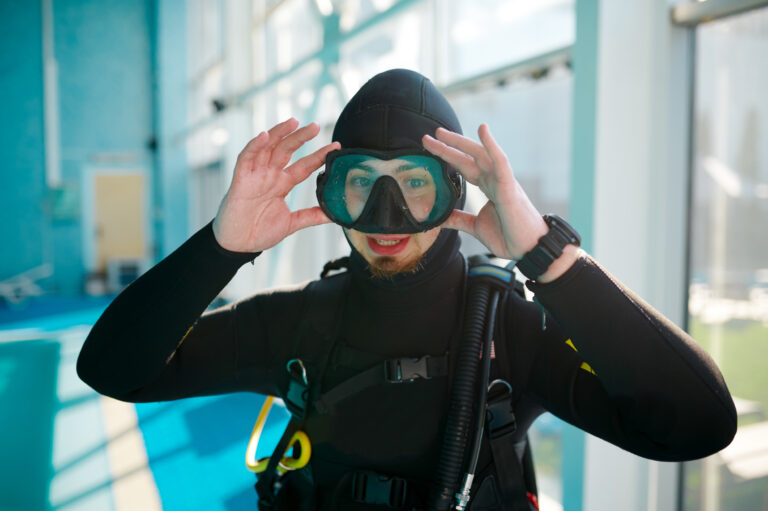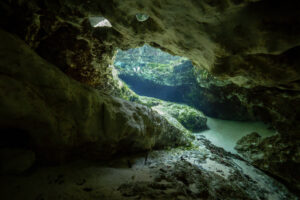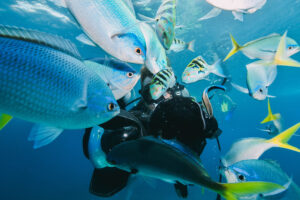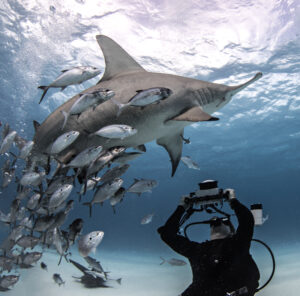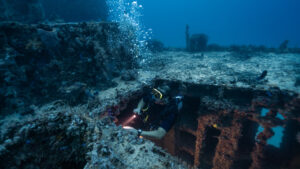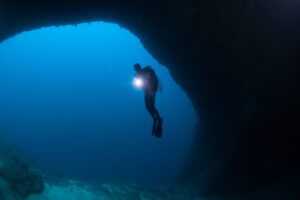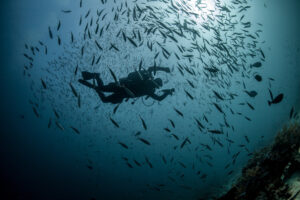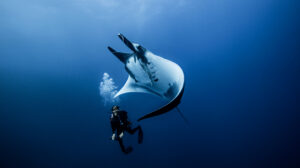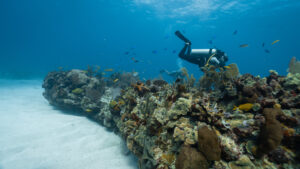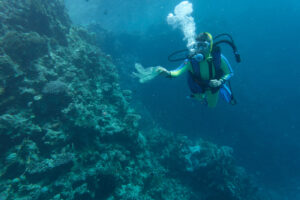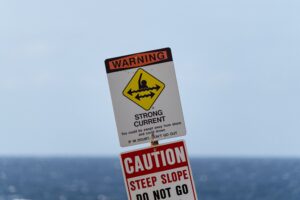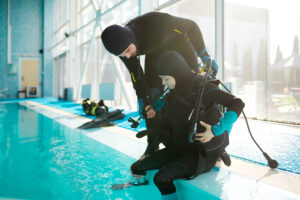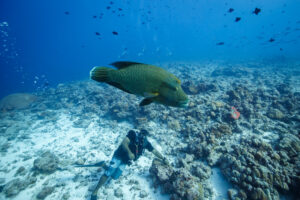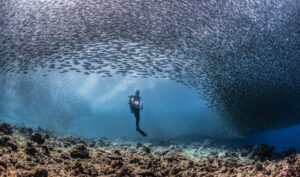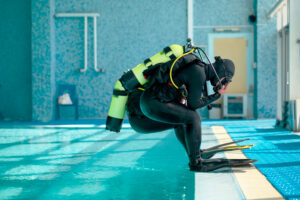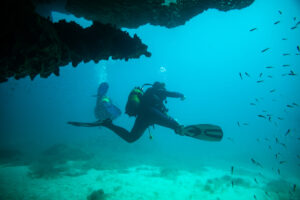What is Recreational Scuba Diving?
Recreational scuba diving is a popular underwater activity enjoyed by millions of people around the world. It allows individuals to experience the underwater environment firsthand, encountering marine life and underwater landscapes that are typically inaccessible. Unlike commercial or military diving, which focuses on tasks such as underwater construction or defense, recreational scuba diving is primarily for enjoyment and adventure. It involves using a self-contained underwater breathing apparatus (scuba) to breathe underwater, enabling divers to spend extended periods submerged. This activity has grown significantly in popularity due to its appeal to adventurers and nature enthusiasts alike.
History of Recreational Scuba Diving
The history of recreational scuba diving is rich and fascinating, beginning with early efforts to explore the underwater world. The roots of scuba diving can be traced back to ancient civilizations where simple breath-hold diving was practiced for food and resources. However, the development of equipment that allows for extended stays underwater is relatively recent. In the 1940s, Jacques-Yves Cousteau and Émile Gagnan revolutionized underwater exploration by inventing the Aqua-Lung, the first open-circuit scuba set. This invention made it possible for divers to breathe compressed air from tanks, which was a groundbreaking advancement.
Post-World War II, the popularity of scuba diving surged as military surplus equipment became available to the public. The establishment of diving clubs and the publication of diving manuals further popularized the activity. By the 1950s and 1960s, scuba diving had become a well-recognized recreational sport. Organizations such as the Professional Association of Diving Instructors (PADI) and the National Association of Underwater Instructors (NAUI) were founded, standardizing training and certification processes, thus ensuring the safety and skill of divers.
Over the decades, technological advancements have continued to shape recreational scuba diving. Innovations such as buoyancy control devices (BCDs), dive computers, and improved materials for wetsuits have made diving safer and more comfortable. These developments, coupled with increased awareness and interest in marine conservation, have solidified scuba diving as a beloved activity for individuals seeking underwater adventures.
Equipment and Gear
Recreational scuba diving relies on specialized equipment to ensure safety and enhance the underwater experience. The basic gear includes a mask, snorkel, fins, and a wetsuit. The mask allows divers to see clearly underwater by creating an air pocket in front of their eyes, while the snorkel enables breathing at the surface without lifting the head. Fins provide efficient movement through the water, reducing energy expenditure and allowing divers to cover greater distances.
The heart of scuba diving equipment is the scuba set, which comprises the tank, regulator, and buoyancy control device (BCD). The tank holds compressed air, typically at pressures around 200 bar (2900 psi), which provides the air supply for breathing underwater. The regulator reduces the high-pressure air from the tank to ambient pressure, delivering it to the diver on demand. Modern regulators are equipped with multiple stages to ensure a smooth and breathable airflow at varying depths.
The BCD is an essential component that helps divers maintain neutral buoyancy underwater, allowing them to hover effortlessly at any depth. It is worn as a jacket or harness and can be inflated or deflated using an attached inflator hose. Proper buoyancy control is crucial for conserving energy, protecting marine environments, and ensuring a safe ascent and descent. Additionally, divers often use weight systems, such as weight belts or integrated weights, to counteract the buoyancy of their wetsuits and equipment.
Advancements in technology have led to the development of dive computers, which have become indispensable for modern divers. These devices track depth, time, and decompression status, providing real-time information to prevent decompression sickness. Other optional gear includes underwater cameras, dive lights, and signal devices, enhancing the diving experience and ensuring safety.
Training and Certification
Training and certification are critical aspects of recreational scuba diving, ensuring that divers possess the necessary skills and knowledge to dive safely. The process begins with an entry-level course, typically referred to as Open Water Diver certification. This course includes theoretical lessons, confined water training, and open water dives, covering fundamental skills such as buoyancy control, underwater navigation, and emergency procedures.
Certification agencies such as PADI, NAUI, and Scuba Schools International (SSI) offer structured training programs recognized worldwide. The Open Water Diver course usually requires a minimum of four open water dives, during which students demonstrate their competency in various skills under the supervision of a certified instructor. Upon successful completion, divers receive a certification card, allowing them to rent equipment and participate in guided dives.
Advanced training courses are available for divers seeking to enhance their skills and explore different types of diving. The Advanced Open Water Diver course introduces divers to deeper diving, night diving, and underwater navigation, among other specialties. Specialty courses, such as wreck diving, underwater photography, and nitrox diving, allow divers to focus on specific interests and gain additional expertise.
Rescue Diver and Divemaster certifications are designed for those who want to take their training further. The Rescue Diver course emphasizes self-rescue and assisting others in distress, while the Divemaster course is the first professional level, preparing divers to lead and instruct others. Continuous education and practice are encouraged to maintain and improve diving skills, with many divers participating in refresher courses or joining dive clubs for regular practice.
Types of Recreational Diving
Recreational scuba diving encompasses a variety of styles, each offering unique experiences and challenges. One popular type is wreck diving, where divers explore sunken ships, aircraft, and other structures. These dives provide a glimpse into history and are often teeming with marine life. Wreck diving requires specialized training due to the potential hazards, such as entanglement and poor visibility.
Night diving is another thrilling variation, offering a completely different perspective on the underwater environment. With the aid of dive lights, divers can witness nocturnal marine creatures and observe behaviors not seen during the day. The experience of diving in darkness can be both eerie and exhilarating, requiring excellent buoyancy control and navigation skills.
Cave diving is a more advanced form, involving exploration of underwater caves. This type of diving demands extensive training and experience due to the complex and often dangerous environments. Cave divers must be proficient in techniques such as line handling and silt management to navigate safely through these confined spaces.
Drift diving is characterized by diving in currents, allowing divers to glide effortlessly along underwater landscapes. This type of diving is particularly popular in regions with strong ocean currents, such as Cozumel in Mexico or the Maldives. Drift diving can be exhilarating, but it also requires careful planning and coordination with the dive boat.
Reef diving is perhaps the most common type of recreational diving, where divers explore vibrant coral reefs. These dives are typically shallow and offer a chance to observe a diverse array of marine life, from colorful fish to intricate coral formations. Reef dives are suitable for divers of all skill levels and are a major attraction in tropical destinations.
Each type of recreational diving offers its own set of rewards and challenges, catering to the varied interests and skill levels of divers worldwide.
Health and Safety Considerations
Health and safety are paramount in recreational scuba diving, with several considerations to ensure a safe and enjoyable experience. Physical fitness is crucial, as diving can be physically demanding. Divers should be in good health and free from conditions that could impair their ability to dive safely, such as severe asthma or heart problems. A medical evaluation is often required before beginning a diving course.
One of the primary risks in scuba diving is decompression sickness (DCS), also known as “the bends.” DCS occurs when dissolved gases, primarily nitrogen, come out of solution and form bubbles in the body due to rapid ascent or inadequate decompression stops. Symptoms can range from joint pain to severe neurological issues. Divers must follow dive tables or use dive computers to plan their dives and ensure safe ascent rates and decompression stops.
Another critical safety aspect is avoiding barotrauma, which results from pressure changes affecting air spaces in the body, such as the ears, sinuses, and lungs. Equalizing pressure in these spaces during descent and ascent is essential to prevent injuries. Training courses teach techniques to equalize pressure effectively and recognize early signs of barotrauma.
Emergency preparedness is also vital in recreational diving. Divers should always dive with a buddy to provide mutual assistance if needed. Knowing how to handle out-of-air situations, perform emergency ascents, and use surface signaling devices are crucial skills. Many divers carry a delayed surface marker buoy (DSMB) to signal their position to the dive boat during ascent.
Environmental conditions such as water temperature, visibility, and currents also affect dive safety. Divers should be aware of these factors and adjust their plans accordingly. Wearing appropriate exposure protection, such as wetsuits or drysuits, is necessary to prevent hypothermia in colder waters. Adequate training, proper equipment maintenance, and adherence to safety protocols significantly reduce the risks associated with recreational diving.
Environmental Impact and Conservation
Recreational scuba diving, while offering incredible experiences, can also impact marine environments. Divers must be mindful of their interactions with the underwater world to minimize harm. One of the most significant concerns is physical damage to coral reefs, often caused by careless fin kicks, touching, or standing on coral. Coral reefs are fragile ecosystems, and even minor contact can cause lasting damage.
To mitigate these impacts, divers are encouraged to practice good buoyancy control, keeping a safe distance from the reef and marine life. Many diving organizations promote the “look but don’t touch” principle, emphasizing observation without interference. Dive operators also play a crucial role by educating divers on responsible practices and monitoring diver behavior during trips.
Marine debris and pollution are significant threats to underwater environments. Divers often participate in cleanup efforts, removing trash and fishing gear from dive sites. Organizations such as Project AWARE advocate for marine conservation and organize events to raise awareness and involve the diving community in environmental protection.
Another aspect of conservation is the establishment of marine protected areas (MPAs), which restrict activities that could harm marine ecosystems. These areas provide safe havens
for marine life, allowing populations to recover and thrive. Divers can support MPAs by respecting regulations and advocating for their expansion.
Sustainable diving practices include choosing eco-friendly dive operators who adhere to environmental guidelines and contribute to local conservation efforts. Divers can also reduce their carbon footprint by minimizing travel emissions and supporting conservation projects financially.
Promoting environmental stewardship within the diving community is essential for the long-term health of marine ecosystems. Education and awareness campaigns help divers understand the impact of their actions and the importance of preserving underwater environments for future generations.
Popular Destinations for Recreational Diving
Recreational scuba diving offers access to some of the most stunning and diverse underwater environments on the planet. Among the most popular destinations is the Great Barrier Reef in Australia, renowned for its extensive coral formations and rich biodiversity. Divers can encounter everything from vibrant corals to a variety of marine species, including turtles, sharks, and rays.
The Red Sea, particularly around Egypt, is another top destination, known for its clear waters, colorful reefs, and historic wrecks. Sites such as the SS Thistlegorm and the Blue Hole attract divers from around the world, offering unique underwater experiences.
In the Caribbean, destinations like the Cayman Islands and Belize boast crystal-clear waters and diverse marine life. The Cayman Islands’ famous Stingray City allows divers to interact with friendly stingrays, while Belize’s Blue Hole is a bucket-list site for many, offering deep dives into a massive underwater sinkhole.
Southeast Asia is home to world-class diving spots such as Indonesia’s Raja Ampat and Thailand’s Similan Islands. These areas are celebrated for their incredible biodiversity, with thousands of fish species and vibrant coral reefs. Raja Ampat, in particular, is often cited as having some of the richest marine biodiversity on the planet.
The Maldives, located in the Indian Ocean, is another premier diving destination, known for its clear waters, abundant marine life, and luxurious dive resorts. Divers can enjoy encounters with manta rays, whale sharks, and colorful reef fish.
These popular destinations highlight the diverse and captivating nature of recreational scuba diving, offering experiences for divers of all skill levels and interests. Each location provides unique underwater attractions, from stunning coral reefs to intriguing wrecks, making them sought-after spots for underwater enthusiasts.
Key Takeaways
Recreational scuba diving is a thrilling activity that offers a unique opportunity to experience the underwater world. With a rich history, specialized equipment, and rigorous training, it provides safe and enjoyable adventures for divers. The various types of diving cater to different interests, from exploring shipwrecks to observing marine life on coral reefs. While diving, it is crucial to prioritize health and safety and to practice environmental stewardship to protect the fragile underwater ecosystems. Popular diving destinations around the world offer diverse and stunning experiences, making scuba diving a cherished activity for millions of enthusiasts.

